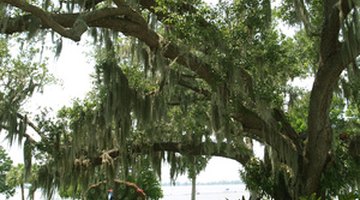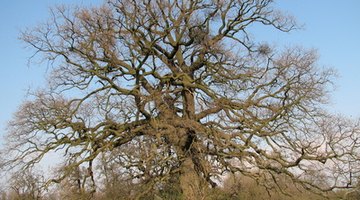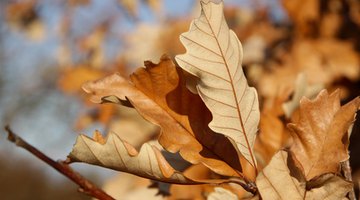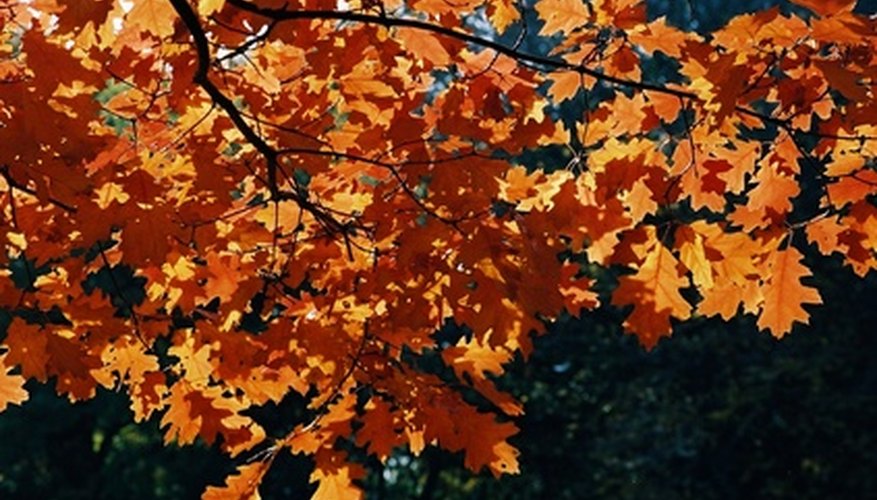About 600 different species of oak (Quercus spp.) exist, all native to various woodland or scrub habitats across the Northern Hemisphere. Widely known for their acorn seeds or deeply lobed and toothed leaves, oaks may display evergreen or winter deciduous foliage. Environmental factors affect when oaks shed leaves, but leaf drop occurs primarily in autumn or spring, depending on species.
Types

Oak tree species that change leaf colour and drop off in fall are known as deciduous. These species typically occur in temperate zones where cool-to-cold winter occurs. Examples of deciduous oak trees are the shingle oak, Northern pin oak, English oak and Italian oak. Some oak trees remain evergreen or nearly so, and frequently hail from warm, temperate regions with mild winters. Even evergreen oaks shed old leaves across the year, but younger leaves remain. Live oak, cork oak, canyon oak and Chinese evergreen oak are examples.
- Oak tree species that change leaf colour and drop off in fall are known as deciduous.
- Some oak trees remain evergreen or nearly so, and frequently hail from warm, temperate regions with mild winters.
Time Frame

Deciduous oak trees drop their leaves late in the autumn. Compared to other woodland trees, oak trees colour their foliage later, often delaying leaf drop into mid to late autumn when nighttime temperatures hover near freezing. Evergreen oaks abort their older, unhealthy leaves in autumn or in spring just before the new leaf and twig growth.
Marescence

Many deciduous oak trees do not develop entire abscission layers in the leaf stems in the fall to cause their leaves to drop off. This phenomenon is called marescence. Shingle and white oaks tend to hold onto their dried, tan leaves across the winter. Harsh winter winds or heavy snow can tear leaves off, but usually it's not until early spring when all leaves fall away. The swelling buds on the branch twigs help complete the separation of leaves in spring.
- Many deciduous oak trees do not develop entire abscission layers in the leaf stems in the fall to cause their leaves to drop off.
Other Factors
Oak trees may shed their leaves earlier than expected when enduring environmental stress. A prolonged drought, disease or insect pests can cause an oak tree to shed foliage to conserve moisture, food or energy. If the oak is not seriously harmed or weakened from the drought or ailment, food reserves and water from the roots propels creation of new leaves later at an opportune time of year.
